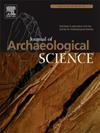Modeling maize-based carrying capacities and population pressure in prehispanic central Panama
IF 2.6
1区 地球科学
Q1 ANTHROPOLOGY
引用次数: 0
Abstract
Few realms of archaeological research are as fraught with potential error as the study of prehistoric population pressure. Much of this error stems from the challenges involved in making prehistoric population and carrying capacity estimates, both of which are conceptually complex and entail numerous assumptions and relatively wide error ranges. But overcoming these challenges is well worth the effort, as it allows archaeologists to push beyond traditional lines of inquiry into the diverse range of ways that population pressure can impact human societal development. Leaving aside for the moment the many important issues involved in making prehistoric population estimates (issues that have been addressed elsewhere in the archaeological literature), this paper builds on the conceptual advancements that have been made in the anthropological literature on estimating carrying capacities and puts them to use in the analytical realm. A model is developed for estimating maize-based carrying capacities in prehispanic central Panama, which is then used to assess population pressure among early complex societies. This assessment reveals patterns that run counter to traditional models of population pressure and complex society development and urge further analytical exploration. The model developed here for estimating maize productivity can be adapted and applied to other regions, especially those where data on prehistoric maize productivity (such as prehistoric cob lengths) is limited or non-existent.
前西班牙时期巴拿马中部以玉米为基础的承载力和人口压力模型
很少有考古研究领域像对史前人口压力的研究那样充满潜在的错误。这种误差很大程度上源于估算史前人口和承载能力所涉及的挑战,这两者在概念上都很复杂,需要许多假设和相对较大的误差范围。但克服这些挑战是值得的,因为它使考古学家能够超越传统的调查路线,探索人口压力影响人类社会发展的各种方式。暂且不谈史前人口估算中涉及的许多重要问题(这些问题在考古文献的其他地方已经得到了解决),本文建立在人类学文献中关于估算承载能力的概念进步的基础上,并将其应用于分析领域。开发了一个模型,用于估计巴拿马中部前西班牙人以玉米为基础的承载能力,然后用于评估早期复杂社会的人口压力。这一评估揭示了与人口压力和复杂社会发展的传统模式背道而驰的模式,需要进一步的分析探索。这里开发的估算玉米生产力的模型可以适应并应用于其他地区,特别是那些史前玉米生产力数据(如史前玉米芯长度)有限或不存在的地区。
本文章由计算机程序翻译,如有差异,请以英文原文为准。
求助全文
约1分钟内获得全文
求助全文
来源期刊

Journal of Archaeological Science
地学-地球科学综合
CiteScore
6.10
自引率
7.10%
发文量
112
审稿时长
49 days
期刊介绍:
The Journal of Archaeological Science is aimed at archaeologists and scientists with particular interests in advancing the development and application of scientific techniques and methodologies to all areas of archaeology. This established monthly journal publishes focus articles, original research papers and major review articles, of wide archaeological significance. The journal provides an international forum for archaeologists and scientists from widely different scientific backgrounds who share a common interest in developing and applying scientific methods to inform major debates through improving the quality and reliability of scientific information derived from archaeological research.
 求助内容:
求助内容: 应助结果提醒方式:
应助结果提醒方式:


